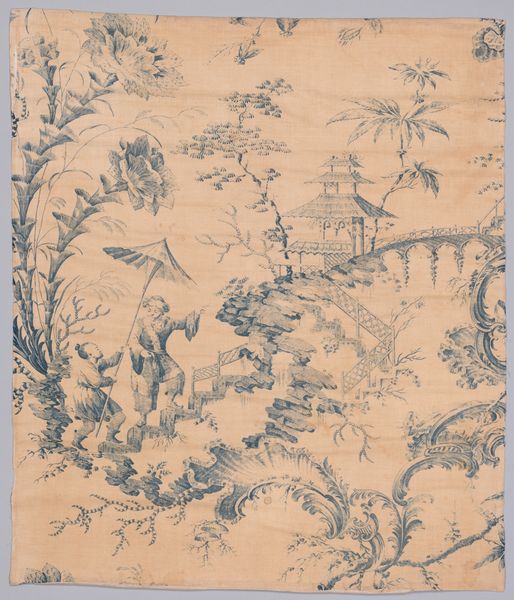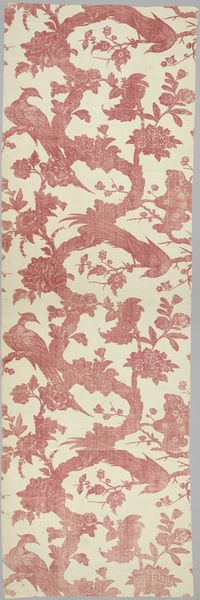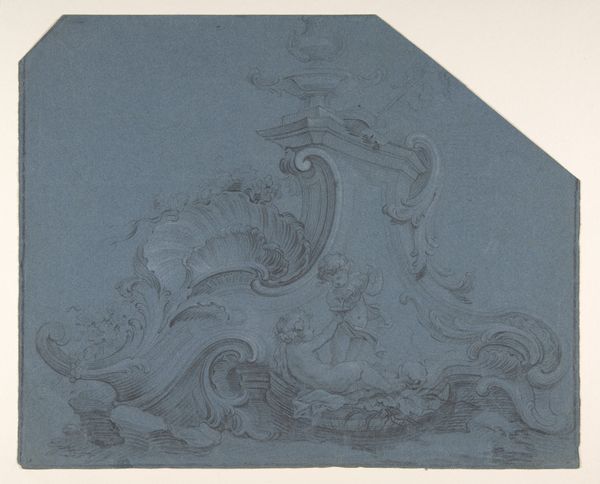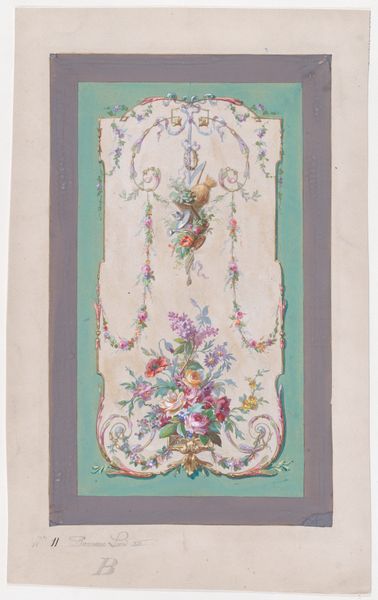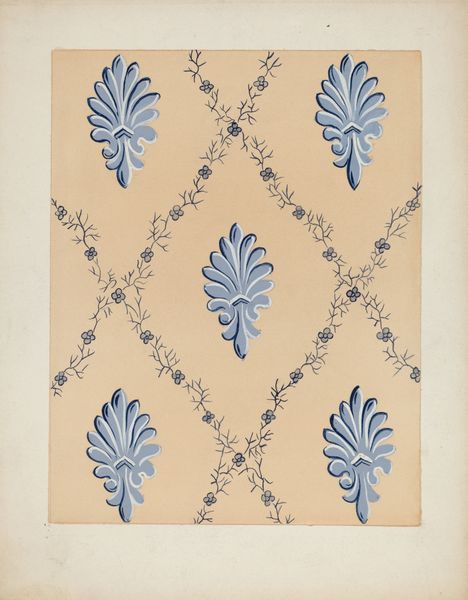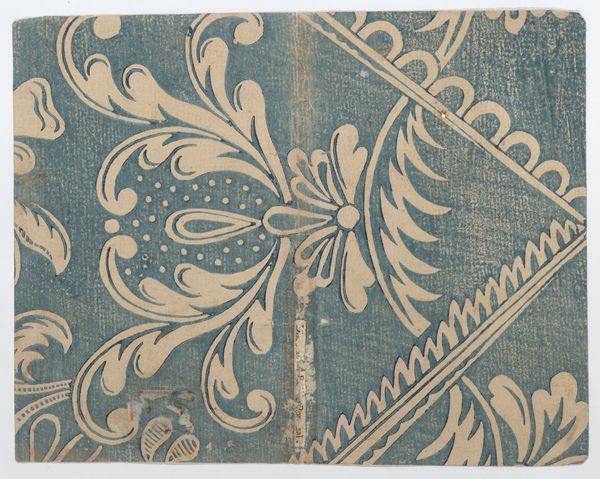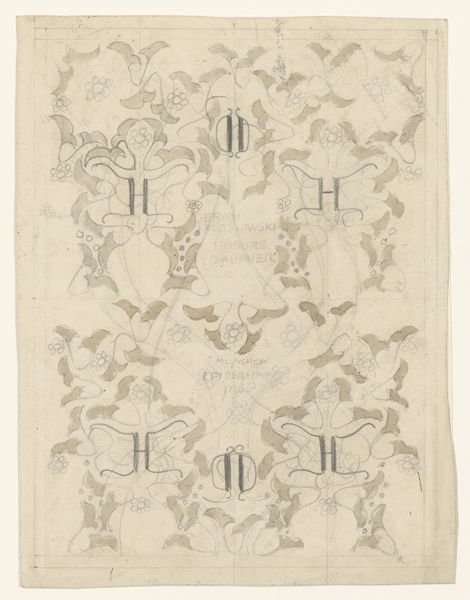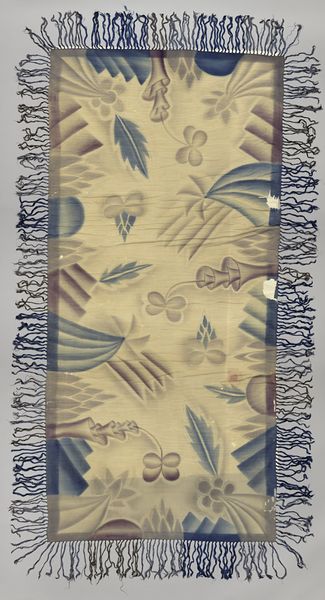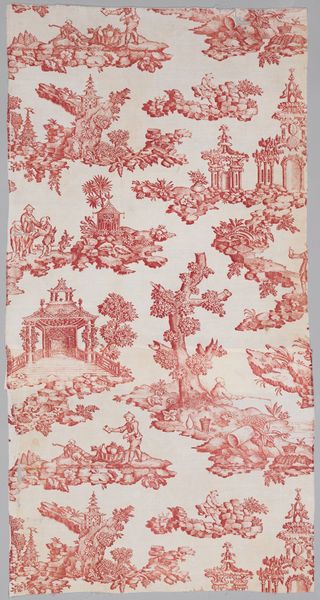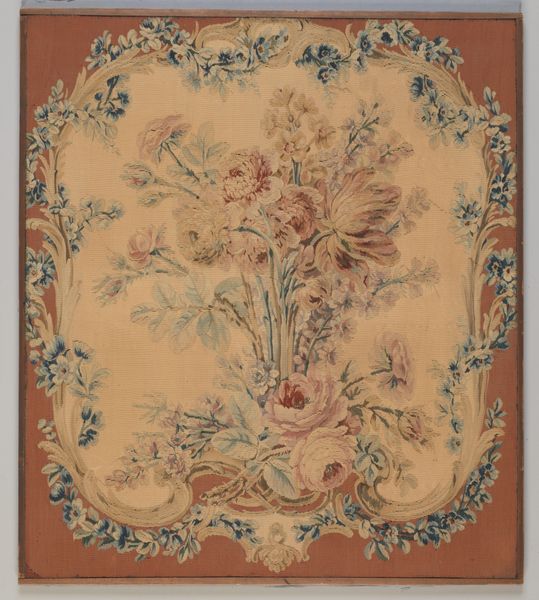
drawing, ceramic, earthenware
#
drawing
#
landscape
#
ceramic
#
figuration
#
earthenware
#
rococo
Dimensions: height 91 cm, width 52 cm
Copyright: Rijks Museum: Open Domain
Curator: Here we have "Three tile panels with Autumn, Summer and Spring," created by Johannes (I) Aelmis, around 1760 to 1780. It’s earthenware, rendered beautifully in shades of blue. Editor: Immediately, I’m struck by the sense of idealized nature – that lovely cobalt offsetting the whiteness. There's a real narrative embedded within this very ornamented Rococo framing. Curator: The medium, of course, is interesting. Earthenware was so prevalent, but these tiles aren't simply functional. There's that decorative border, plus, look closely – you can see a clear division of labor to create these, each tile hand-painted, mass produced to be sold but not printed. It's right on the cusp of fully industrial processes taking over, isn't it? Editor: Absolutely, and the use of the seasonal motif within a garden or park like setting has fascinating symbolic underpinnings. Look how the central image alludes to classical Arcadia; a beautiful woman gestures toward a companion, presenting grapes—a potent symbol of fertility, harvest, and even Bacchic revelry! Curator: And that symbolism was readily available. Transfer printing on ceramics was slowly starting, but high level clientele valued hand painting like this piece because the quality of the hand was perceived higher, even though earthenware itself would remain inexpensive as a raw material. Editor: It really taps into a collective memory. Those flowing lines, the blue-and-white aesthetic… they evoke a sense of tradition and continuity, almost mimicking Chinese porcelain. I wonder what narratives the owner or viewer brought to such tiles within a home? What were the cues to engage with themes about nature, luxury, or refinement? Curator: Excellent questions. I suppose it forces us to consider the conditions of display, its placement inside of architecture to regulate or amplify the messages you’re referring to. Editor: It is a rather lovely set of images… Curator: Yes. Examining the processes involved—both creative and industrial—gives another appreciation of what a thing like this would have represented, and who it might have reached.
Comments
rijksmuseum about 2 years ago
⋮
Couples with individual attributes represent three of the four seasons. An elegant, Rococo border frames the scenes. The panels probably come from a room once decorated with tiles.
Join the conversation
Join millions of artists and users on Artera today and experience the ultimate creative platform.
